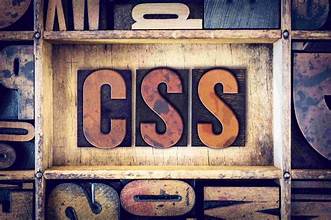Cascading style sheets (CSS) are essential for website styling, but large CSS files can slow or block page rendering. CSS minification makes CSS files smaller.
Why minify CSS?
CSS minification reduces the size of cascading style sheet (CSS) files so that they load faster. CSS minification eliminates all unnecessary characters and spaces from CSS markup without impacting how browsers interpret it.
CSS files contain instructions for formatting HTML elements. When they load faster, webpages load quicker overall, just as wearing lightweight clothing helps a jogger run faster. Fast loading improves the page’s user experience and SEO value, and page speed improvements can even help boost conversion rates.
As an example, this simple style sheet has several lines of code, along with comments for developers reading it:
/* paragraph styling here */
p {
font-family: arial;
color: green;
background-color: white;
}
/* links */
a:link {
color: blue;
}
a:visited {
color: white;
}
After CSS minification, it is just one compressed line, and the comments are removed:
p{font-family:arial;color:green;background-color:white;}a:link{color:blue;}a:visited{color:white;}
While this text is less readable for humans, a browser reads and interprets the second version like the first. The minified version has the advantage of loading faster because it takes up less space.
How page rendering works
Before a browser can display a webpage, it must know what elements (such as text, images, and other multimedia) are on it and where everything goes. Contractors need a building’s blueprints before construction, but browsers need a webpage’s “blueprints” before rendering the page.
Upon receiving an HTML file for a webpage, browsers begin constructing a Document Object Model (DOM) tree, like a rough outline or a sketch of all the elements on the page. Browsers also parse all <style> tags and linked CSS files to build a CSSOM tree, which maps out how all those page elements will be styled.
Finally, browsers combine the DOM and CSSOM to create a “render tree.” Once the render tree is created, the browser starts painting the page. Until this happens, the user is looking at a blank screen.
The upshot: until the browser finishes downloading and reading CSS, the page cannot appear.
How can CSS block a webpage from displaying?
In web development, any element or feature that has to be loaded before the page can be displayed to the end user is called a “render-blocking resource.” CSS is such a resource. Render-blocking resources must be optimized for quick loading whenever possible.
Large render-blocking resources take longer to download, causing the browser to wait — blocking the page — so it appears to the user as if nothing is happening. Delays like this often cause users to leave the page (“bounce”).
They also impact Core Web Vitals, the metrics Google uses to measure page performance — particularly Largest Contentful Paint (LCP), which measures how long the largest element of a page takes to load. Poor Core Web Vitals scores can cause Google to rank the page lower in search results so that the page may receive less traffic overall.
How to minify CSS
Fortunately, many minification tools are available for CSS. Perhaps the most convenient approach is to use the minification tools integrated with a website’s content delivery network (CDN), a service that caches and delivers content. CDNs should be able to provide minification services to boost performance further.
What is the difference between CSS minification and compression?
Technically, CSS minification differs from CSS compression, even though both goals are the same: reducing the file size. Minification alters the code by removing comments and characters. Compression makes the file smaller through a compression algorithm (such as gzip) and does not alter the file’s contents.
Are there any downsides to minifying CSS?
Because minified CSS is often less readable, minification can make it harder for developers to identify and fix bugs in CSS markup manually.
Also, minifying CSS alone is insufficient to improve a website’s performance. It may buy a website milliseconds, but there are additional actions website operators must undertake to see significant performance improvements — including image optimization, browser HTTP caching, and more.
CSS vs. JavaScript minification
JavaScript minification is a similar concept but for executable JavaScript code. Comments, spaces, and extra characters are removed so the .js file can load and execute more quickly. JavaScript and CSS minification both contribute to a faster-loading website and can result in better user engagement and increased organic traffic.





